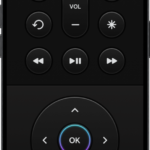In the world of sensors, achieving optimal performance is paramount. Whether you’re using sensors for industrial applications, automotive systems, or consumer electronics, ensuring they operate smoothly and reliably is crucial. One term that often pops up in discussions about sensor performance is “gacor.” But what exactly does it mean, and how can you ensure your sensors exhibit gacor operation? In this article, we’ll delve into the concept of sensor gacor, explore strategies for maximizing sensor performance, and provide actionable tips to help you achieve gacor operation consistently.
Understanding Sensor Gacor
Before we dive into optimization strategies, let’s first clarify what “gacor” means in the context of sensors. Gacor is a term commonly used in Indonesian slang, particularly in the automotive community, to describe something that operates smoothly, efficiently, and without hiccups. When applied to sensors, achieving gacor operation implies consistent and reliable performance without glitches or errors.
Maximizing Sensor Performance
Now that we have a clear understanding of what sensor gacor entails, let’s explore some strategies for maximizing sensor performance to achieve this coveted state.
Proper Installation and Calibration
One of the fundamental steps in ensuring gacor operation of sensors is to ensure they are installed correctly and calibrated accurately. Improper installation can lead to misalignment or mechanical stress on the sensor, compromising its performance. Calibration ensures that the sensor’s output is accurate and consistent across its operating range, minimizing errors and variability.
Regular Maintenance and Inspection
Just like any other mechanical or electronic component, sensors require regular maintenance and inspection to ensure optimal performance. This includes cleaning, lubrication, and checking for signs of wear or damage. Regular inspections can help detect potential issues early on, preventing costly failures and downtime.
Environmental Considerations
The operating environment plays a significant role in the performance of sensors. Factors such as temperature, humidity, vibration, and electromagnetic interference can affect sensor performance. It’s essential to choose sensors rated for the specific environmental conditions they will encounter and take appropriate measures to mitigate any adverse effects.
Quality Power Supply
A stable and reliable power supply is essential for consistent sensor operation. Fluctuations or interruptions in power can disrupt sensor readings and lead to erratic behavior. Investing in quality power conditioning and surge protection equipment can help ensure a steady supply of power to your sensors, minimizing the risk of performance issues.
Conclusion
Achieving gacor operation of sensors is a goal worth pursuing for any application where reliability and accuracy are paramount. By following the strategies outlined in this article, you can maximize sensor performance and minimize the risk of downtime and errors. Remember to prioritize proper installation and calibration, regular maintenance and inspection, environmental considerations, and quality power supply to ensure your sensors operate smoothly and reliably in any conditions.










